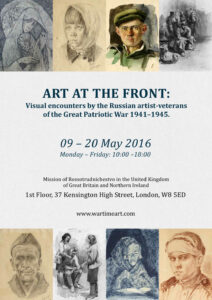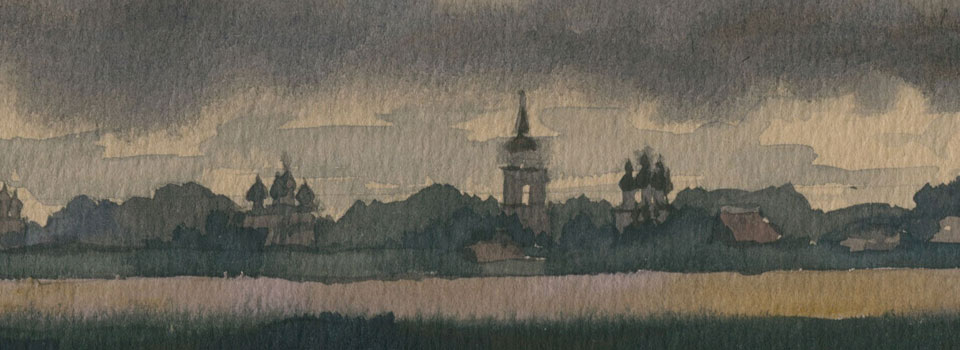Th

Art at the Front 2016
ART AT THE FRONT: Visual encounters by the Russian artist-veterans of the Great Patriotic War 1941–1945.
The years of 1941–45 became the most tragic in the history of Russia and the Soviet Union. Every day takes us further away from those times and there are fewer surviving witnesses left among us. However, the visual wartime records have been preserved in the drawings of the artists who had to become combatants and went through the war with a rifle and a pencil, fought for their lives in besieged Leningrad, but remained faithful to their artistic endeavours and continued to draw.
The exhibition shows selected works by Russian artist-veterans of the Great Patriotic War – direct participants in the battle of Berlin, the opening of the Road of Life, the liberation of Leningrad; and the key events on the Kalinin front, the Battle of Kursk and the Warsaw operation.
Here one can see visual memories of the war in life sketches created in the rare lulls between battles, scenes in the hospitals, in the dugouts, on the streets and in the homes of inhabitants in the dying cities. There are also portraits of combatants and civilians, for many of whom they became the last records.
The Second World War took the lives of over 70 million people. Of these the Soviet Union suffered the most significant human losses: more than 27 million people, including almost a million Leningraders who died during the 900-day siege of the city.
Artistic records that are often created spontaneously, and with exceptional speed, transmit the sincerity and emotional depth of the experience. These works are of unique documentary and cultural value, as they constitute a private, personal history of the Second World War, outside any official propaganda, being accessible to a wide audience without division into the national language and culture.
The exhibition is being held for the first time in London and presents works by three professional Russian artists, whose skills can be compared to British artists such as Augustus Edwin John, William Orpen, Stanley Spencer and Eric Kennington.
It is dedicated to the memory of all those who died in the Second World War, in the name of peace, mutual understanding and art.
